

 |
|
 |
|---|---|---|
|
|
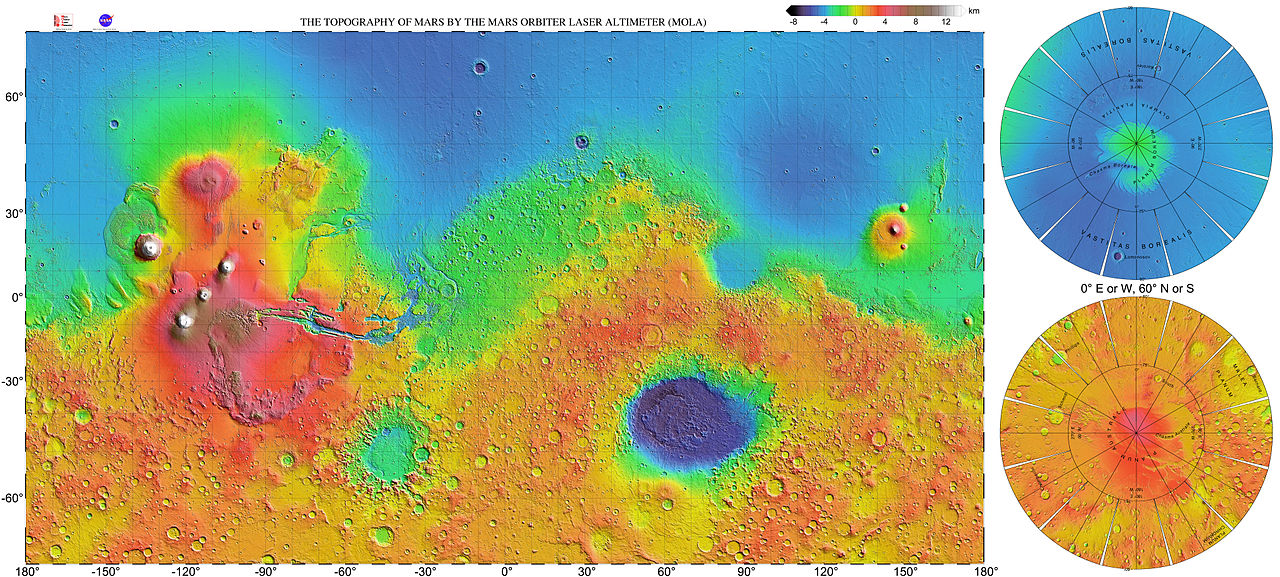 |
|---|
Mars needs water, nitrogen, and carbon dioxide. All three can be provided by crashing a comet into it. Comets have water and nitrogen, and the impact will liberate carbon dioxide from Mars' crust.
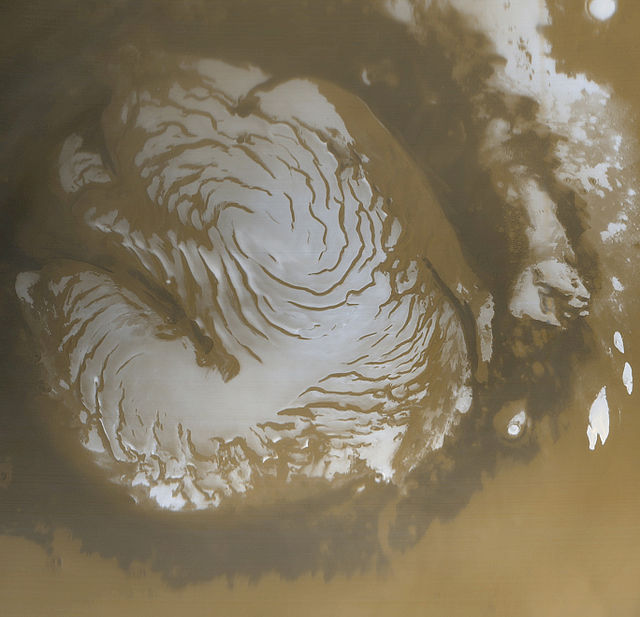 |
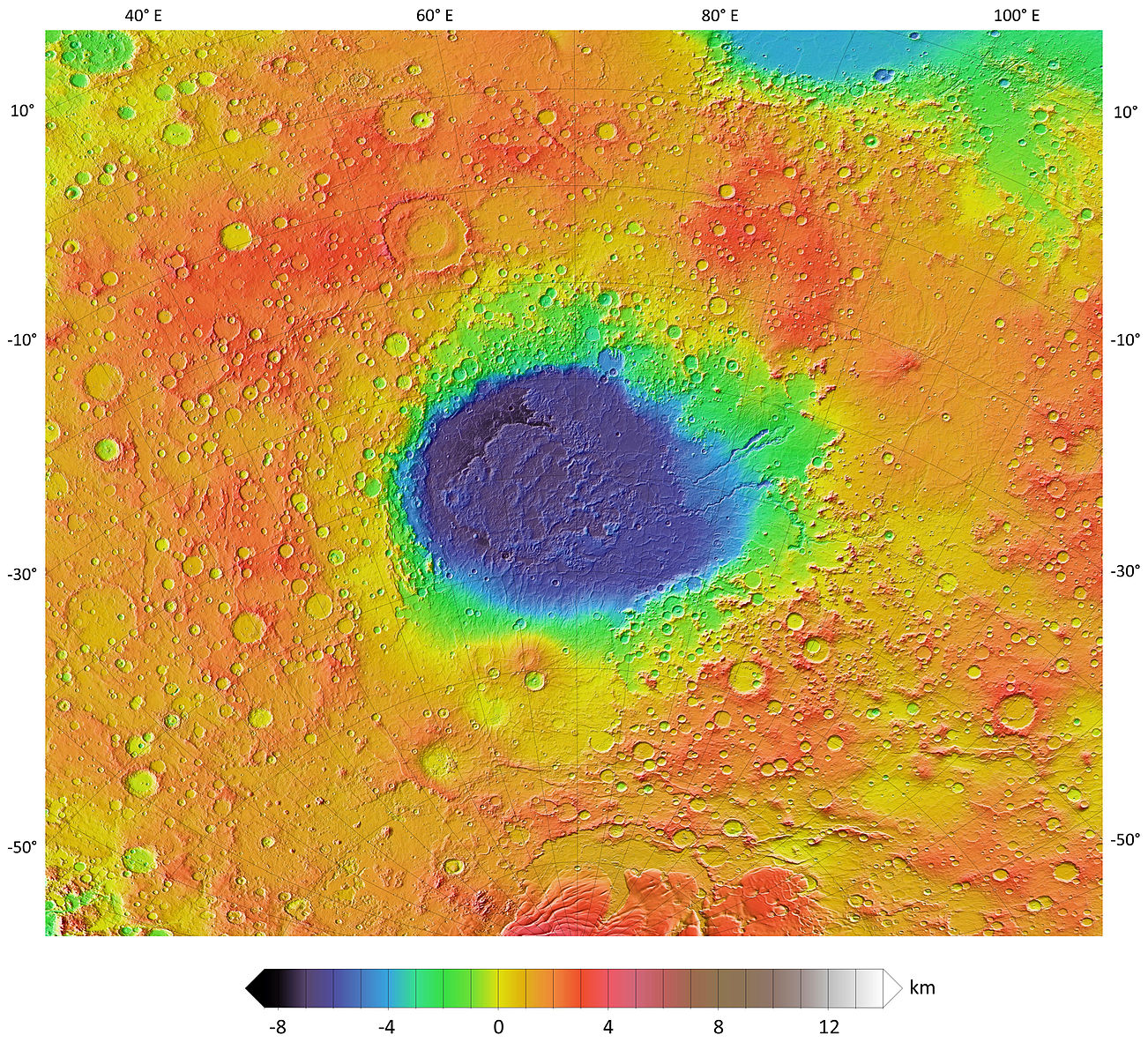 |
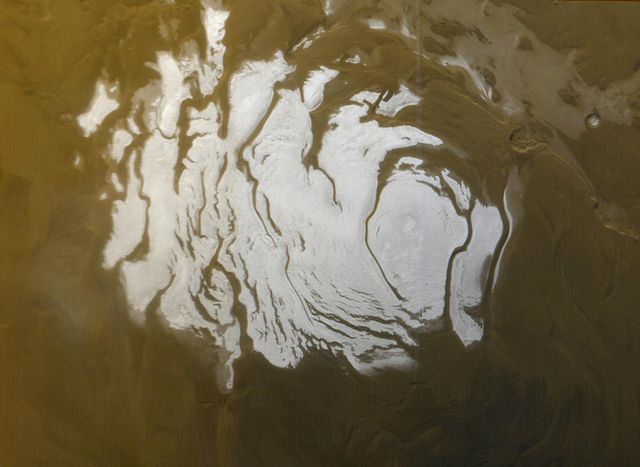 |
|---|---|---|
The objects in the solar system with meaningful atmospheres are:
Density Column Pressure Atmos. Escape Gravity Atmos. Temp Adiabatic
at surface density mass speed Height lapse
kg/m3 tons/m2 Bar Earth=1 km/s m/s2 km K K/km
Venus 67 1000. 92.1 93.2 10.36 8.87 16 735 10.5
Titan 5.3 73. 1.46 1.19 2.64 1.35 130 94 1.3
Earth 1.2 10. 1 1 11.2 9.78 8 287 9.8
Mars .020 .16 .0063 .0045 5.03 3.71 11 210 4.5
Hellas .037 .29 .0116 5.03 3.71 240
The Hellas basin on Mars is a crater 7.12 km deep. The above data for
"Hellas" is for the environment at the bottom of the crater, where the air
is warmer and more dense than at the surface.
"Lapse" is the adiabatic lapse rate, the characteristic decrease in temperature with altitude.
Earth atmosphere mass = 5.15⋅1018 kg Mars atmosphere mass = 2.32⋅1016 kg
Pressure requirements for plants and humans. Pressures in millibars.
Plant Human Mars Earth
Pressure >10 >500 6.3 1000
N2 > 1 .27 780
O2 > 1 >130 .008 210
CO2 > .15 < 10 6.0 .39
The highest cities on the Earth are at at atmospheric pressure of ~ 600 millibars.
Pressure T
(Bar) (Kelvin)
Earth 1 288
Mars .006 210
Mars Hellas Basin .010 225 7 km deep. Value for the environment at the bottom
Titan 1.46 94
Minimum for plants .1 273
If Mars were warmed to room temperature, CO2 would evaporate from the
poles and double the atmospheric pressure.
Temperature Water vapor (C) pressure (Bar) 0 0.0061 10 0.0121 20 0.0230 30 0.0418 40 0.0727 50 0.122At room temperature, the pressure from water vapor is almost enough for planet growth.
Mars has abundant ice. If the ice on the polar caps were distributed evenly over the surface it would create a layer 11 meters deep. This is more than enough to supply water vapor for the atmosphere if Mars were warmed to room temperature.
Radiation is an obstacle. Mars' atmosphere isn't thick enough to block cosmic rays and there is no ozone to block UV. Being at the bottom of the Hellas Basin doesn't help.
Mars can be warmed with orbital mirrors. Metal can be mined from Phobos and Deimos, where it is easily lifted into space.
Escape speed (km/s)
Earth 11.2
Mars 5.0
Deimos .0056
Phobos .0113
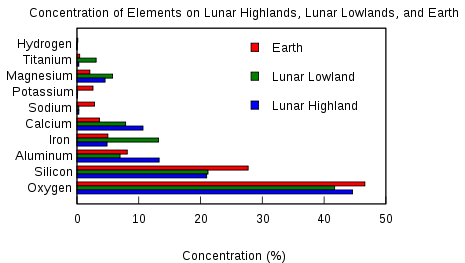 |
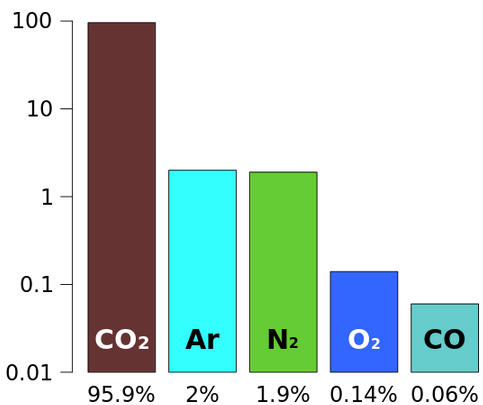 |
|---|---|
Moon Mars
Hydrogen y y From ice
Oxygen y y From ice
Nitrogen n y Mars' atmosphere is 1.9% nitrogen
Carbon ? y
Iron y y
Phosphorus y y
Potassium y y
Helium-3 y n Fuel for nuclear fusion energy. The Earth is poor in Helium-3
If the Earth is an ideal blackbody,
Solar heating ~ Blackbody radiation ~ Stefan_Boltzmann_constant * Area * Temperature4 1361 Watts/m2 π Earth_radius2 ~ 5.67⋅108 W/m2/K4 4 π Earth_radius2 Temperature4 Temperature ~ 278 KelvinThe Earth's average temperature is 287 Kelvin.
The sun's luminosity is increasing and in ~ 1 billion years the oceans will boil off even if the Earth has zero CO2. In ~ 5 billion years the sun will become a red giant and consume the Earth.
.jpg) |
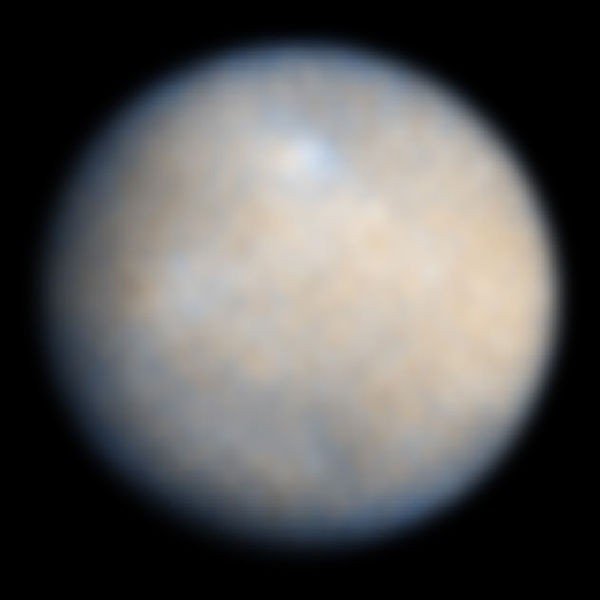 |
|---|---|
Radius Mass H2O H2O Escape Perihelion Apehelion
(km) Mass frac speed (AU) (AU)
Earth 6371 59700 14 .00025 11.2 .98 1.02
Mars 6420 5.03 1.38 1.67
Ceres 487 9.43 2.0 .21 .51 2.55 2.99
Themis 99 .2 ? ? .087 2.72 3.54
Europa 480 250 .5 2.02
Ganymede 1480 700 .5 2.74
Callisto 1080 500 .5 2.44
Titan 1350 700 .5 2.64
Triton 214 ~ 40 ~.25 1.46
Masses in 1020 kg
Ceres has as much H2O as the Indian ocean and it has a small escape speed.
The asteroid Themis has been found to have ice.
http://en.wikipedia.org/wiki/24_Themis
mg/m3 370 CO2 density in Earth air 10000 Onset of drowsiness if not already acclimated 20000 CO2 density on Mars 30000 Tolerable for 1 month 40000 Tolerable for 1 weekHumans can adapt to high concentrations of CO2
mg/m3
.1 Level of carbon monoxide on Earth
12 Level of carbon monoxide on Mars
35 Dizziness within six to eight hours of constant exposure
100 Slight headache in two to three hours
200 Slight headache within two to three hours; loss of judgment
400 Frontal headache within one to two hours
800 Headache and dizziness, nausea, and convulsions within 45 min; insensible
within 2 hours
1600 Headache, tachycardia, dizziness, and nausea within 20 min; death in less
than 2 hours
3200 Headache, dizziness and nausea in five to ten minutes. Death within 30 minutes.
6400 Headache and dizziness in one to two minutes.
Convulsions, respiratory arrest, and death in less than 20 minutes.
12800 Unconsciousness after 2–3 breaths. Death in less than three minutes.
mg/m3
10 Eye irritation
50 Eye damage
100 The olfactory nerve is paralyzed after a few inhalations, and the sense
of smell disappears, often together with awareness of danger
320 Leads to pulmonary edema with the possibility of death.
530 Causes strong stimulation of the central nervous system and rapid breathing,
leading to loss of breathing.
800 lethal concentration for 50% of humans for 5 minutes exposure
1000 Immediate collapse with loss of breathing, even after inhalation of a single
breath.
Methane is not toxic.
The closest source of nitrogen for an atmosphere is the moons of Neptune.
Mean
Temperature Min Max Parent Albedo
(K) (K) (K) planet
Mercury 340 100 700
Venus 735 735 735
Earth 288 184 330
Moon 220 100 390
Mars 210 130 308
Ceres 168 ? 235
Europa 102 50 125 Jupiter
Ganymede 110 70 152 Jupiter
Callisto 134 80 165 Jupiter
Titan 94 Saturn
Titania 70 60 89 Uranus
Oberon 75 Uranus
Nitrogen freeze 63
Oxygen freeze 54
Triton 38 Neptune .76
Nereid 50 Neptune .155
Pluto 44 33 55 .58
Hydrogen freeze 14
The boundary between rocky and icy objects is at Ceres' orbit.
The boundary for frozen nitrogen is at Neptune's orbit.
Diameter Mass Orbit Orbit Orbit
(km) (e16 kg) (km/s) (Mm) (days)
Naiad 66 19 11.9 48.2 .294
Thalassa 82 35 11.7 50.1 .311
Despina 150 210 11.4 52.5 .335
Proteus 420 5035 7.6 117.6 1.122
Sao 44 6 .55 22228 2913
Laomedeia 42 5 .54 23567 3171
Psamanthe 40 4 .39 48096 9074
Neso 60 15 .37 49285 9741
Neptune orbit speed = 5.43 km/s
 |
|---|